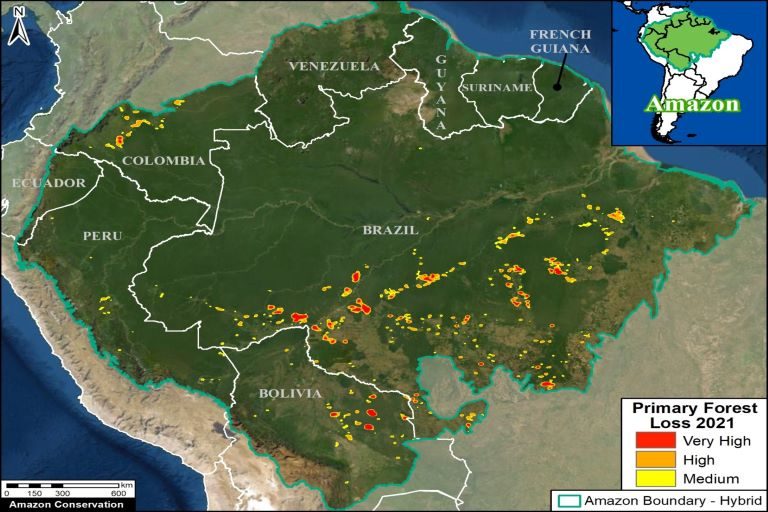
Amazon’s ‘Flying Rivers’ Weaken with Tree Loss
Introduction
GK & Current Affairs for CLAT | CLAT Current Affairs 2026
Powered by CLAT Gurukul – Best online coaching for CLAT
The Amazon rainforest, often called the “lungs of the Earth,” is not only a biodiversity hotspot but also a massive climate regulator that sustains the ecological balance of South America and the world. However, a new scientific warning has raised global alarm — the Amazon’s “flying rivers” — invisible aerial streams of moisture that transport rain across the continent — are weakening due to deforestation and climate change.
These “flying rivers” are vital for rainfall in regions like Peru, Bolivia, Ecuador, and Brazil, as they transport moisture from the Atlantic Ocean inland, maintaining ecosystems and supporting agriculture and hydroelectric power generation. As tree loss continues, scientists warn that these aerial rivers could dry up, leading to severe droughts, loss of biodiversity, and conversion of rainforests into savannas.
For CLAT 2026 aspirants, this topic offers deep interdisciplinary learning — combining environmental law, climate policy, and geopolitics — key areas for legal and general awareness.
Why in News
- Scientists have found that deforestation in the Amazon rainforest is disrupting the “flying rivers” — large atmospheric currents that carry rain across South America.
- As deforestation progresses, the weakened flying rivers may cause severe droughts in Peru, Bolivia, and Brazil, particularly in areas where tree loss is most intense.
- The research warns that this process could push the Amazon ecosystem past a tipping point, transforming it from a rainforest into a savanna — a much drier ecosystem with far fewer trees.
- This development has global consequences, as the Amazon acts as one of the largest carbon sinks on Earth, helping to slow global warming.
- The findings were released amid growing debates on how to legally enforce environmental protections across international borders, given that the Amazon spans nine countries.
Background: The Science Behind ‘Flying Rivers’
- The term “flying rivers” refers to airborne streams of moisture generated by evapotranspiration from the Amazon rainforest.
- Trees absorb water from the soil and release it into the atmosphere through transpiration, creating moist air masses that move westward due to trade winds.
- These moisture-laden air currents then condense and fall as rain over the Andes, Bolivia, Peru, and southern Brazil.
- Essentially, the Amazon forest acts like a pump — drawing water from the Atlantic Ocean and redistributing it across the continent.
- If deforestation continues, this water cycle breaks down, reducing regional rainfall and worsening droughts.
Key Findings from the Report
- Deforestation Is Weakening Amazon’s Water Cycle
- Tree loss disrupts the Amazon’s ability to generate and recycle rainfall.
- As trees disappear, less moisture enters the atmosphere, leading to a decline in cloud formation.
- Scientists predict that large parts of the southwestern Amazon could transition from rainforest to savanna — a grassy landscape with sparse trees.
- Droughts Are Intensifying
- Crops in Peru are drying up, and hydroelectric dams in Ecuador are struggling due to low water levels.
- Forest fires in Brazil are worsening, while rivers and tributaries are shrinking, affecting local communities and wildlife.
- Flying Rivers at Risk of Collapse
- The weakening of flying rivers means less water is carried westwards from the Atlantic Ocean.
- Moisture that once reached Peru’s Manu National Park and Bolivia’s highlands may no longer do so, leading to desertification and ecological collapse.
- Carbon Sink in Danger
- The Amazon stores vast quantities of carbon dioxide, acting as a natural buffer against global warming.
- Loss of tree cover reduces this capacity, accelerating climate change globally.
Why the Amazon’s Flying Rivers Matter
- Regional Hydrology
- The Amazon’s hydrological cycle supports farming, river navigation, and hydroelectric power in at least nine countries.
- Without its rainfall patterns, major cities like São Paulo and La Paz could face chronic water shortages.
- Biodiversity Preservation
- The rainforest supports over 3 million species of plants and animals.
- Changing weather patterns threaten the delicate ecological balance that sustains this biodiversity.
- Global Climate Impact
- The Amazon influences weather systems across continents by regulating humidity and temperature.
- Disruption could have cascading effects on global rainfall, food production, and carbon absorption.
How Flying Rivers Work (Step-by-Step Process)
- Moisture Source:
The Atlantic Ocean provides humid air masses to the Amazon Basin. - Evapotranspiration:
Amazonian trees release moisture into the air through transpiration. - Atmospheric Pump:
The forest acts as a “pump,” moving water vapor westward. - Aerial Flow:
The moving air currents — “flying rivers” — carry water vapor across Brazil into the Andes. - Precipitation:
When the moist air cools, it condenses and falls as rain in western Amazonia, Bolivia, and Peru.
Scientific Insights
- Origin of the Term “Flying Rivers”
- Coined in 2006 by Brazilian scientist Carlos Nobre and his team.
- They discovered how the Amazon’s evapotranspiration process functions as a massive invisible river in the sky.
- These rivers can carry more water than the Amazon River itself.
- Warning Signs
- Researchers say the system is now at risk of collapse due to massive deforestation.
- If rainfall drops further, the rainforest could reach a “tipping point” — turning into dry grasslands permanently.
Areas Most Vulnerable
- Southern Peru and Northern Bolivia are at high risk due to their dependence on flying rivers for rainfall.
- Southern Brazil, especially near the Andes foothills, faces the greatest threat where deforestation is most intense.
- The Manu National Park (Peru) — one of the most biodiverse areas in the world — is drying out.
- Scientists warn that without immediate conservation, millions of hectares could become uninhabitable.
Ecological and Legal Implications
- Indigenous Rights
- Indigenous communities depend on forests for livelihoods and water regulation.
- Weakening flying rivers endangers Indigenous land rights, threatening traditional agriculture and forest management systems.
- Environmental Law Enforcement
- Governments across the Amazon region are urged to implement cross-border legal protections for forest preservation.
- Environmental activists demand stronger laws against illegal logging and corporate land encroachments.
- Climate Policy and Global Responsibility
- Since the Amazon serves as a global carbon sink, protecting it is part of international climate agreements.
- Failure to conserve it may jeopardize global climate goals under the Paris Agreement.
The Way Forward: Scientists’ Recommendations
- Immediate Curb on Deforestation
- Governments must enforce logging bans and penalize illegal forest clearing.
- Companies linked to deforestation in supply chains must be held accountable.
- Forest Restoration
- Reforestation programs should target degraded lands to revive moisture circulation.
- At least half a million square kilometers need restoration to stabilize rainfall.
- Protecting Indigenous Land
- Indigenous communities are vital for forest conservation — they act as natural custodians of the ecosystem.
- Policies should grant them legal protection and recognition.
- International Collaboration
- Brazil, Peru, and Bolivia must cooperate on transnational conservation frameworks.
- Wealthy nations should provide climate finance to fund restoration.
- Global Emissions Control
- Scientists emphasize that if global warming exceeds 2°C, even massive restoration may fail to save the Amazon.
Consequences of Inaction
- Ecological:
- Loss of forest cover would release billions of tons of carbon into the atmosphere.
- Increased wildfires and loss of species.
- Economic:
- Collapse of farming, fishing, and hydropower sectors.
- Potential food insecurity in Latin America.
- Social:
- Displacement of Indigenous communities.
- Increased migration due to water scarcity.
Conclusion
The Amazon’s “flying rivers” are one of nature’s most extraordinary yet fragile phenomena. Their weakening due to deforestation and climate change not only threatens South America’s survival but also the planet’s climate balance.
As the Amazon edges closer to a tipping point, urgent global cooperation is essential — encompassing scientific innovation, legal intervention, and community participation.
For CLAT 2026 aspirants, this case exemplifies how environmental law, climate policy, and international cooperation intertwine in shaping the world’s ecological future.
It reminds us that safeguarding nature is not just a scientific concern — it’s a legal, ethical, and civilizational duty.
Notes: Explanation of Key Terms
- Flying Rivers:
Airborne streams of moisture created by evapotranspiration in the Amazon rainforest that carry rainfall across South America. - Evapotranspiration:
Combined process of evaporation (from soil and water) and transpiration (from plants) releasing moisture into the air. - Savanna:
A grassland ecosystem characterized by scattered trees, forming a transitional zone between tropical forests and deserts. - Tipping Point:
A critical threshold beyond which an ecosystem undergoes irreversible change — here, when rainforests turn into dry savannas. - Carbon Sink:
A natural system (like forests or oceans) that absorbs more carbon dioxide than it releases, helping mitigate climate change. - Indigenous Rights:
Legal and moral rights of native communities to govern and protect their ancestral lands and resources. - Hydrological Cycle:
The continuous movement of water between the atmosphere, land, and oceans through evaporation, condensation, and precipitation.
This Blog is Powered by CLAT Gurukul — India’s Leading Law Entrance Prep Platform
At CLAT Gurukul, we believe in empowering future legal minds with the right blend of knowledge, strategy, and mentorship. This blog is a reflection of our commitment to quality content that not only helps aspirants stay updated but also sharpens their conceptual clarity.
Why CLAT Gurukul?
- Personalized Mentorship by Top Legal Educators
- Comprehensive Study Materials & Legal Updates
- Daily Practice Sets, Mocks & Performance Tracking
- Result-Oriented Strategy for CLAT, AILET, and CUET
Whether you’re reading this article to deepen your understanding or to stay ahead in your exam prep — you’re already one step closer with CLAT Gurukul by your side.
Join thousands of successful aspirants who trusted CLAT Gurukul and cracked India’s top law entrance exams.
Visit https://www.youtube.com/@CLATGurukul/shorts to learn more or speak to our experts now!
Note from CLAT Gurukul
At CLAT Gurukul, we are committed to providing free CLAT study material, including CLAT current affairs, legal reasoning practice sets, general knowledge updates, logical reasoning questions, English comprehension exercises, and more — all curated by top mentors.
Our blog section is regularly updated with high-quality CLAT content tailored to match the evolving pattern of the CLAT UG exam. Whether you’re looking for CLAT 2026 current affairs, CLAT legal reasoning passages, or mock practice sets, we have you covered.
We believe in open-access learning and will continue to publish free CLAT preparation resources to help serious aspirants succeed.
Explore more free content under categories like:
Best online coaching for CLAT, CLAT current affairs, CLAT GK updates, CLAT legal updates, CLAT logical reasoning, and CLAT English preparation.
For structured learning, daily mocks, and expert mentorship, visit https://www.youtube.com/@CLATGurukul/shorts — the Best CLAT Coaching in Patna and India’s most trusted platform for CLAT online coaching.
